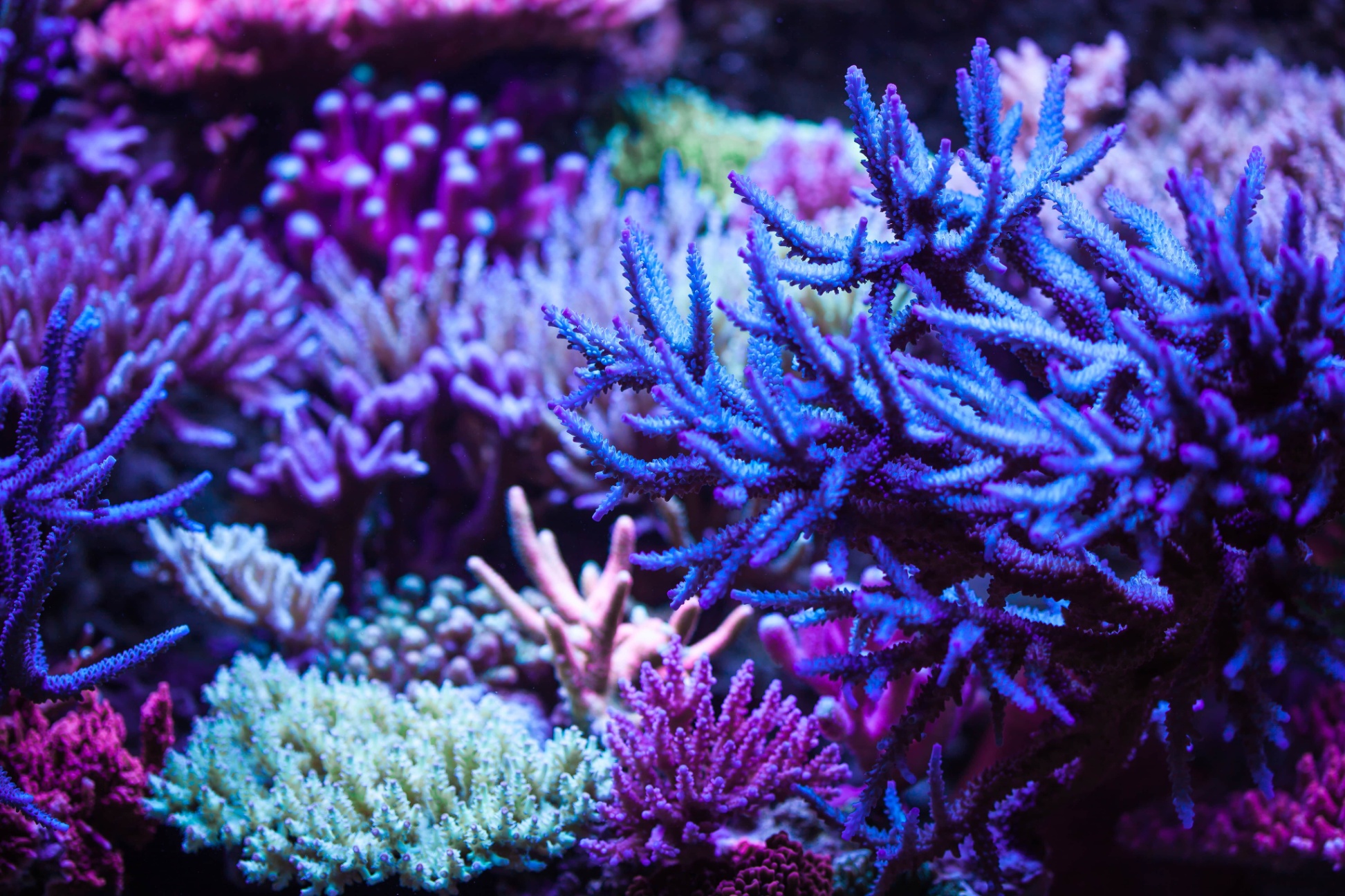
Cách FAUNA MARIN tái hiện lại một bể cá rạn san hô biển
Habitat Off Shore
Who does not love it, the pictures of turquoise reefs of the South Pacific. Clear water and species-rich SPS reefs performing the most beautiful colours!
The biotope type “Off Shore” is an extreme habitat, because it forms the border line between reef and open ocean. Here, beautiful table-shaped Acropora corals live in full current, just below the breaking waves. The water of the outer reefs is far away from the coasts, nutrient-poor, cooler and clearer than in the inner reef.
The care of fast growing corals from the outer reef zone is complex and demanding. Therefore, you should only start it with some reefkeeping experience. Low nutrient levels and precise adjustment of trace and mass element concentrations as well as water treatment are important issues here.
Offshore animals are not used to large changes in water parameters and nutrient concentrations and need stability.
The special colouring of the SPS from the outer reef zone is a result of the nutrient-poor and clear waters. The corals receive the full light radiation spectrum, but also the undiminished water flow of the breakers, which whip over the reef edge. Biodiversity in the outer reefs is lower and mainly determined by SPS and corals with encrusting growth. Corals from these zones are often obtained from Australia or the Fiji Islands, but Indonesian corals are also suitable for this biotope type.
Offshore corals love clean water with lowest nutrient concentrations but good food supply. So in every area it depends on how pure and high-quality the employed products are.
Fauna Marin recreates reef aquariums
We have understood to think no longer in systems, but in biotope types, in habitats. Every coral reef consists of different zones having completely different environmental conditions. And in order to feel comfortable and develop well, each reef animal requires an aquarium where the appropriate biotope type has been created.
With our biotope types and matching products, you will be able to care for the corresponding corals and bring perfect small sections of the reefs of our world into your living room and enjoy nature.

A reef tank:
Offshore Reef
Offshore Reef – lush hard coral growth in the strong light zone
Foaming water spray at the sea surface reveals the outer reef edge below. This is where the particularly light-demanding SPS corals live that can tolerate even the strongest water currents and powerful UV radiation – as is the case in the Offshore Reef biotope type. To achieve this, the corals require best water quality and current, optimum lighting, low nutrient concentrations and a supply of all necessary elements. They reward you with a burst of vibrant colour that is unrivalled in the coral reef. Metallic shades of blue, strong violet and fluorescent green are the cornerstones of this life community, and the table-shaped growth of the acroporids makes the heart of every hard coral friend beat faster. Other fast growing SPS corals like Seriatopora, Stylophora or Pocillopora also grow here, or Montipora corals in all colours and growth forms. Tangs and anthias feel at home here, as do colourful wrasses and Centropyge angelfish that find numerous hiding places between the corals.
Care
The dosage suggestions we give are geared towards a well stocked aquarium with average fish population and good feeding. The dosage quantities should be adjusted according to the stocking level, technique and lighting regime.

Recommended water values
| Salinity | 34–35 ppt |
|---|---|
| Calcium | 440 mg/l |
| Kalium | 420 mg/l |
| Magnesium | 1.250 mg/l |
| dKh | 6,5–7 |
| Temp | 25–27 °C |
| Nitrate | 0–2 mg/l |
| PO4 | 0,01–0,02 mg/l |
| Dynamic Elements | Elements balanced at high level from 5 µg |
| Recommended partial water change | 1 x 10 % per week |
Lighting values
| Strong lighting | up to 800 PAR |
|---|---|
| Color | White/blue blue 10.000-14.000 K |
| Source | LED/T5 |
| Duration | 10–12h daily |
Basic supply of calcium/carbonates
Balling Light System; the dosage depends on the individual consumption of the aquarium decisive for this is the measurement of the KH value as well as the calcium value. The usual consumption of calcium and carbonates is in a ratio of about 1:4 Ca/KH when the chemical stability of the aquarium is reached.
Water treatment
| Carb L | 50 gr./100 l – replace every four weeks (mixable with zeolith) |  |
|---|---|---|
| Zeolith | 50–100 g/100 l via zeolith filter – replace every four weeks |  |
Additional supply
of bacteria and corals
| Organic | 0,5 ml/100 l/day |  |
|---|---|---|
| Amin | 0,5 ml/100 l/day |  |
| Elementals K | as required |  |
| Elementals Trace | if necessary, adjustment after ICP analysis | Link |


















